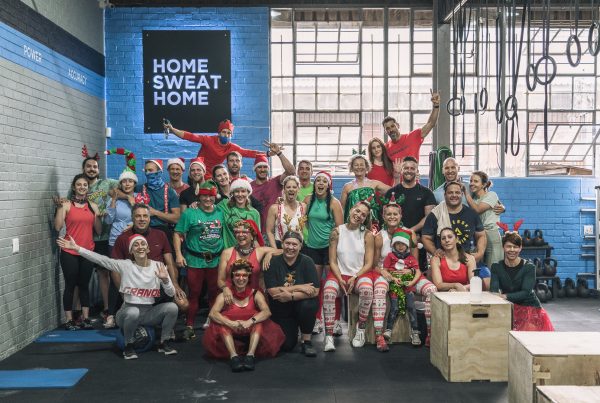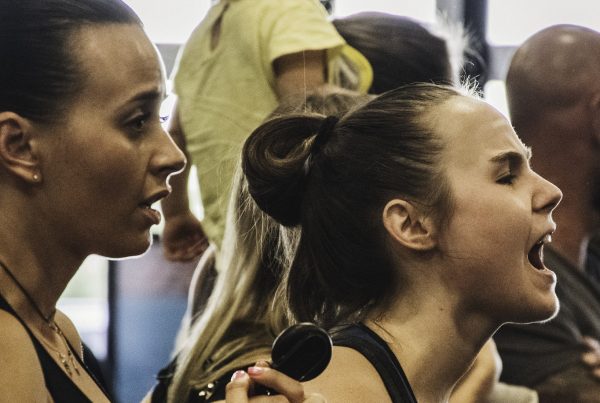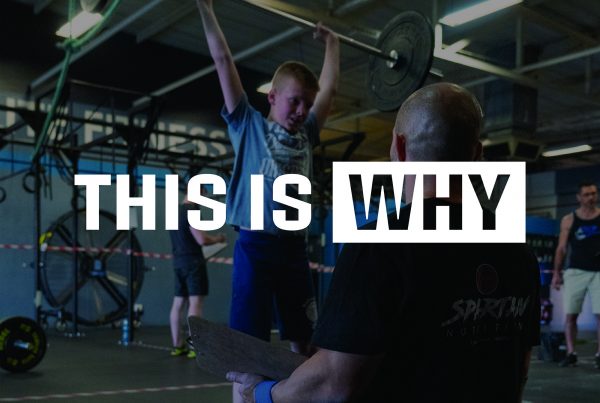Among all the varying definitions and explanations of what CrossFit is, perhaps the most common is it’s the “sport of fitness.” It may have something to do with the competitive nature of the training environment in affiliates, a bit to do with all the fitness competitions using CrossFit-style workouts, and helluva lot to do with the Sport of Fitness™ being the official tagline for the CrossFit Games.
In fact, that trademarked tagline provides the distinction between CrossFit the training program and CrossFit as a sport.
CrossFit The Training Program
CrossFit the training program is what CrossFit was truly designed for. The overwhelming majority of people doing CrossFit are training for life. They want to be better cyclists, runners, hikers, parents, healthier grandparents, athletes – they want to be the healthiest and fittest they can possibly be. They use CrossFit to increase their level of general physical preparedness (GPP), and a better GPP correlates to better performance in life or sports.
People under this category are by no means lesser athletes than anyone else, they simply have different goals. Training once a day in class on three to five days a week is sufficient to realising some of those goals. With good and varied programming, training that way is sustainable for life and should see consistent improvements in most areas of fitness. Some might spend extra time working on weaknesses or preparing for an event such as a marathon, a triathlon or even an in-house throwdown like our event last week, but overall, the sacrifices here are minimal and training in class is more than enough preparation.
These are the people we exist to serve. You are the reason CFJ was opened, you are majority of our clientele, and that’s just how I like it!
CrossFit as a Sport
This is the other face of CrossFit, but even this face has two sides to it!
- CrossFit as a Recreational Sport
Many people training CrossFit grow to enjoy the competitive aspect of it. This competitive edge is typically fostered in training where you have your previous scores to beat, where you’re using the person beside you as motivation to keep moving, where the group environment itself drives you to work harder. These people grow to enjoy that competitive aspect so much that they regularly enter local competitions – it becomes their weekend sport.
Here, aside from a good base level of GPP, some specific goals are required to ensure safety and enjoyment in competition. The more serious recreational athlete may need individualised programming, will need to keep their nutrition dialled in, and will need to learn about managing themselves in competitions.
While people here make up a much smaller percent of our clientele, we have the systems and resources in place to support them.While some extra sacrifices are made here, the goal is still to chill out and have some fun. Performing well in an event isn’t the be all – like participating in a local club sport. Whereas playing sports professionally demands a vastly different commitment.
- The CrossFit Games
By this I am referring specifically to training towards competing at either Regional or Games levels of the CrossFit Games. While just about every Games athlete trains CrossFit to grow their base level of GPP, the Games have evolved to include a specific skill set. While aspiring Games athletes must still ensure a strong GPP (for life), they now also need to acquire the specific skills required to compete effectively at Games level.Specific skill training can be referred to developing ‘specific physical preparedness’ (SPP). Therein lies the difference between CrossFit and The CrossFit Games.
It’s the same in all sports. You can use the sport as way of keeping fit, but if you want to compete at a high level in that sport you need to be conditioned specifically for the demands of that sport.As with any sport, the sacrifices start mounting here. More specific programming is required along with a staunch dedication to keeping nutrition and other recovery practices dialled in. Athletes often have to train alone and may sometimes become alienated from the community. They’ll have to train through the aches and pains. But for them, it’s okay, because it’s what’s required to realise their goals.
Be it in our gym or the general CrossFit community, these athletes form a tiny percent and therefore form an even smaller percent of the general population.Just as we support recreational CrossFit athletes, we have always supported athletes with genuine aspirations to compete at this level. There are no quick routes for these athletes, and for most, it will take years to realise their goals.
Your goals ultimately dictate the face of CrossFit you choose to follow, so record some tangible goals. Set short term (3 month), mid-term (6 month) and long term (1 year) goals. Record why you have those goals. List how you’re going to achieve those goals.
We’re here to help you achieve those goals. You may just need more consistent training in class or a bit of extra flexibility work. Maybe you need some help in preparing for an event, or want to level out your fitness so you’re better prepared for CrossFit-style competitions. Or perhaps you’d like to take a good stab at getting to Regionals, in which case you’ll have to be prepared to prepare for many months.
Either way, you should always be having fun. Training should never feel like a chore, so if it ever gets there, sit down to re-evaluate those goals.
As our favourite Pat Sherwood quote goes, “The goal is just to get fit, make it the best hour of your day, stay safe, turn up the music, high five some people, and blow off some steam. So remember that. RELAX. HAVE FUN. WORKOUT.”



